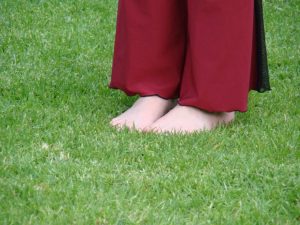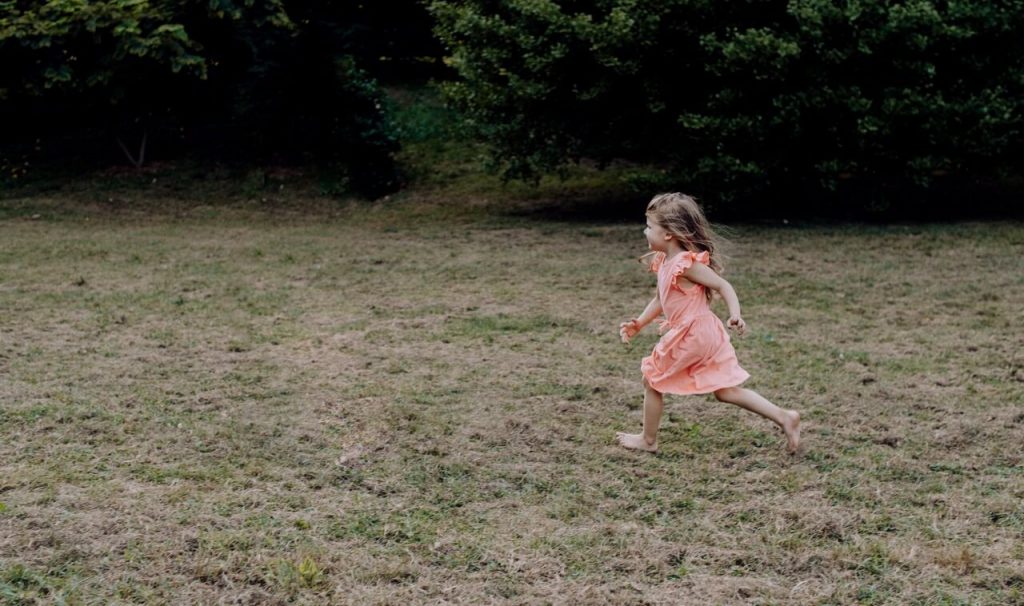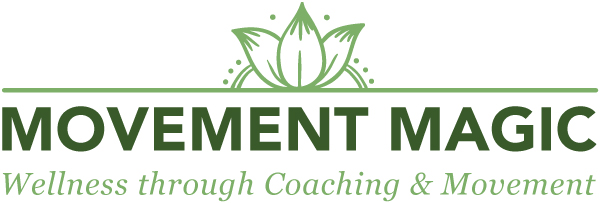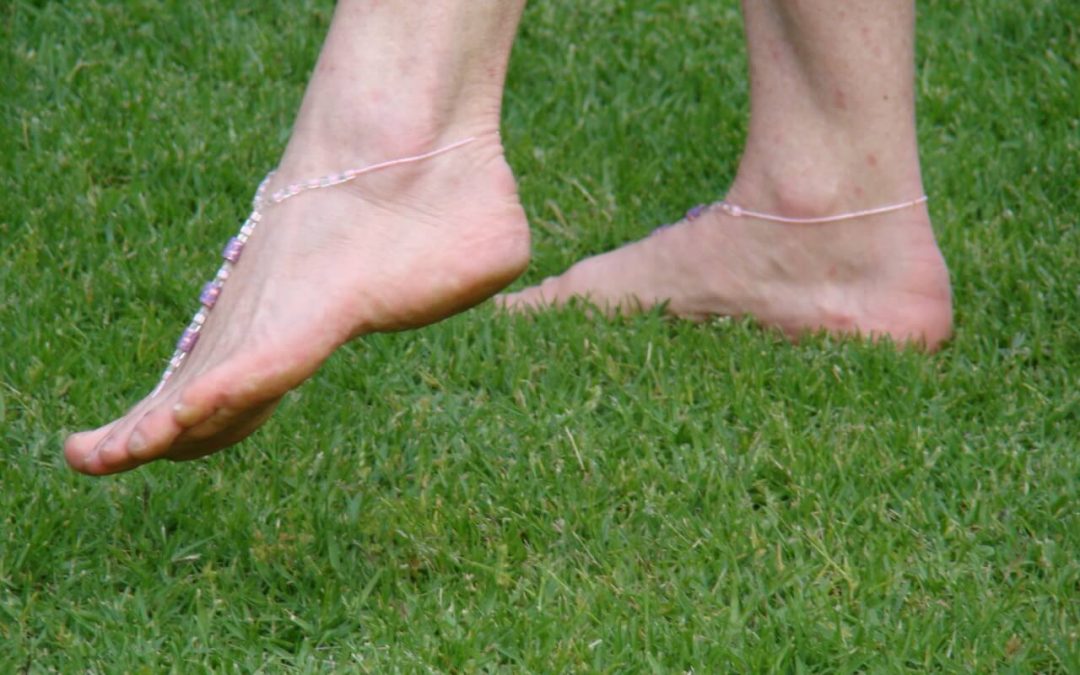Are your feet firmly planted on the ground? Or have you had the rug pulled out from under your feet recently? Were you swept off your feet once upon a time, only to get itchy feet later? Have you committed to a major decision, and then suddenly got cold feet and pulled out? Do you approach your day with clay feet sometimes? Or do you jump in, feet first? We have so many phrases in English that have to do with our feet. I love to take note of expressions like this, because although they are obviously figurative, they are rooted in the wisdom of the body.
Benefits of running or walking barefoot
In the Nia Technique we choose to move barefoot, because our feet belong on the earth. We have evolved for millions of years to walk the earth barefoot. [An aside: We have certainly not evolved to wear high heels! Women in high heels, in order to maintain balance, have to tense their calf, hip and back muscles, which leads to fatigue and sometimes pain. In addition, in high heels, the spine is taken out of alignment, excess pressure is placed on the knees and on the balls of the feet. High heels every now and then on a night out are fun and fine, but everyday use is not a great idea!]
Zola Budd, the famous South African/British Olympic barefoot distance runner, was running barefoot at a time when every other runner was wearing built-up sneakers for support. It turns out that Zola may have had it right – as research is showing the following:
- Barefoot runners have fewer injuries, and that wearing sneakers that are highly supportive of the feet, may actually be weakening our foot muscles. (Holowka et al 2018)
- The longitudinal arch of the foot gives us that “spring in our step”. In western, shoe-wearing populations, many have what’s known as flat feet, where the arch is not stiff or high enough, and it can impair how they walk. In indigenous populations, who use minimal footwear and are mostly barefoot, the arch is higher, and the muscles of the foot are stronger (Holowka et al, 2018.)
- Shoes change the way we run, from heel strike with shoes, to a shorter gait and a toe strike barefoot, and may be causing more injuries in runners (Davis et al 2017).
- Adapting to barefoot running requires time and practice, as it is a new skill, and may not be possible for all runners (Tam et al, 2014).
- We can, however, strengthen our feet by simply walking barefoot, and that this is more effective than doing foot exercises. (Ridge et al, 2019).
- Natural calluses on the feet from barefoot walking protect and at the same time retain sensitivity. In this way bare feet give us a guide to the force with which our feet should strike the ground. This changes the way we walk, and could have profound effects on the rest of our skeleton. (Holowka et al, 2018)

The intriguing health benefits of earthing/grounding.
I love to be barefoot. I love to feel the earth under my feet. It helps me to feel balanced and connected. Walking (or dancing) barefoot outside, on the grass or on the beach, is even more pleasurable. You know how for safety the electrical systems in your home are “earthed”? They need to have a connection to the ground. It seems that we need this too. There is now a growing body of research into the physiological effects of walking barefoot outside, i.e. connecting the skin directly with the earth. Researchers have observed improved sleep, less inflammation, reduced pain, and a balancing of the cortisol in the body after grounding treatment.
It seems that exposure to the earth’s electrons has the following physiological benefits:
- reduces stress markers like cortisol,
- reduces both chronic inflammation and inflammation from injury (Oschman et al, 2015).
- There are also benefits for cardiovascular health and autoimmune disease (Chevalier et al, 2012), as well as sleep and mood disorders.
- Electrons act as natural antioxidants which neutralise free radicals (Oschman, JL, 2007). Free radicals are waste products in the cell, that when built up, harm the cells of the body.
From an ancestral point of view, we spent millions of years walking barefoot, sitting and sleeping on the ground, and now we do very little of that. There are always barriers – shoes, mattresses, chairs. It seems that that disconnect is adversely affecting our health, and reconnecting feet to earth has multiple health benefits.
Our amazing feet and how the Nia Technique supports them
Our feet are intricate and perfectly designed to support the weight that they carry. One amazing fact is that there are over 200 000 nerves in our feet. The skin on our feet contain receptors, which make them highly tuned in to pressure, temperature, vibrations or pain. Have you tried balancing on one foot in a Nia class or at home? or even just standing on your two feet? There is a lot going on when you are doing this. The nerves in the feet are sending a continuous stream of impulses to the brain, just to keep us upright, as the muscles detect minute changes that allow us to balance. There are 26 bones in your foot, 3 arches that give you that spring in your feet, and more than a hundred tiny muscles. Our ancestors used their feet to grasp and pull and climb trees, and our feet too can become extremely versatile if we work all those tiny muscles. We might even be able to grab that passing worm or lizard in our toes!
The Nia Technique foot moves are designed to keep your feet healthy and mobile. The Heel Lead move is foundational: taking the weight from the big calcaneus bone through to the ball of the foot transfers the energy gently and prevents jarring on the foot, knee and hip. The relevé (rising from a whole foot onto the ball of the foot) strengthens and opens up the ankle joint. The duck walk (lifting the toes and slapping them down again, duck-like) strengthens the muscles of the lower leg and feet and rock around the clock (rolling on the edges of the feet) creates mobility and strength in the whole foot. Stepping onto the ball of the foot strengthens the tendons around the ankle joint.
Give your feet the attention they deserve. A pampering, a massage, but most of all, pay attention. Become aware of how the placing of your feet affects your knees and hips. Notice what happens in your hips and lower back when you place your toes in, out and parallel (another Nia move). Work towards parallel feet as you walk, as well as in Nia in the stances: closed, open, A and sumo stance – the rest of your body will thank you. Walk the earth with awareness – tread lightly, with bare feet, as you walk your path.
Davis IS, Rice HM, Wearing SC. Why forefoot striking in minimal shoes might positively change the course of running injuries. J Sport Health Sci. 2017;
Holowka et al. Foot strength and stiffness are related to footwear use in a comparison of minimally- vs. conventionally-shod populations. Nature. 2018
Holowka et al. Foot callus thickness does not trade off protection for tactile sensitivity during walking. Nature. 2018
Oschman, JL: Can Electrons Act as Antioxidants? A Review and Commentary. Journal of Alternative and Complementary Medicine. 2007.
Oschman, JL. Chevalier, G and Brown, R. The effects of grounding (earthing) on inflammation, the immune response, wound healing and prevention and treatment of chronic inflammatory and autoimmune diseases. Journal of Inflammation Research. 2015
Ridge, ST, Olsen, MT, Bruening, DA and Jurgensmeier, K. Walking in Minimalist Shoes is Effective for Strengthening Foot Muscles. Medicine and Science in Sports & Exercise 2019.
Tam, Astephen, Wilson, Noakes, Tucker, 2014: Barefoot running: an evaluation of current hypothesis, future research and clinical applications.


